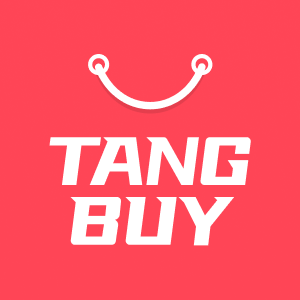Mastering Dropshipping in 2025: A Step-by-Step Guide to Launching a Profitable Store
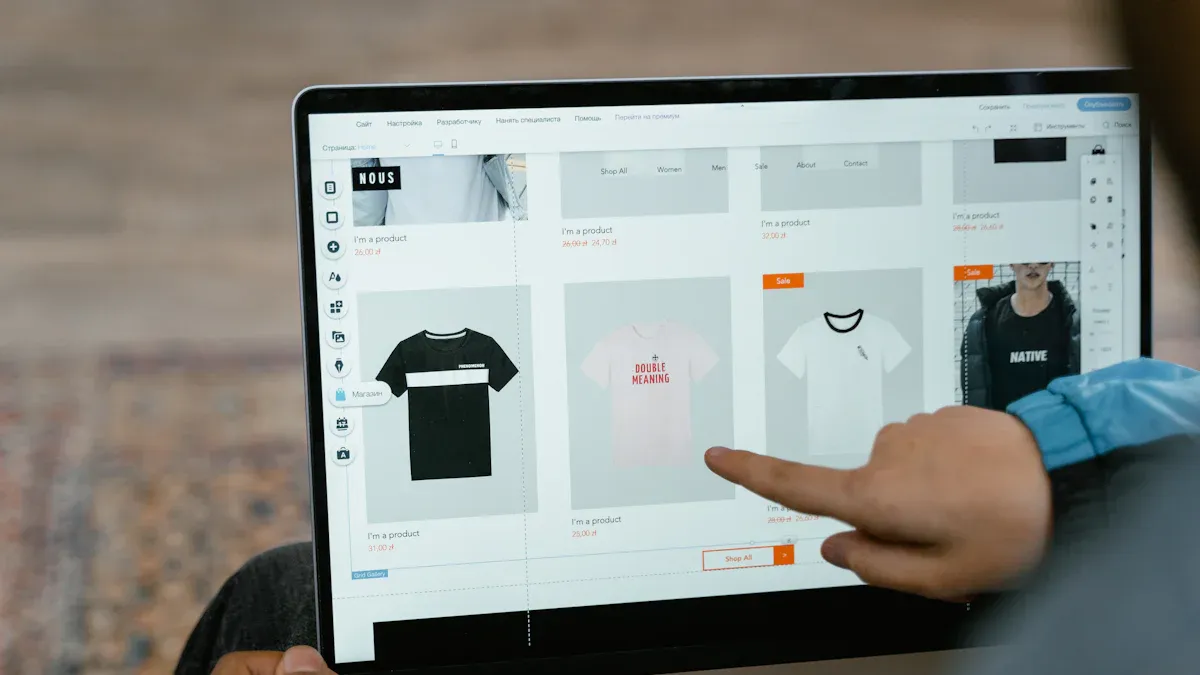
You can master dropshipping in 2025 by conducting thorough research and adopting smart business habits. The global dropshipping market is expected to exceed £464 billion in 2025, highlighting the vast opportunity available. Focus on mastering dropshipping by selecting a strong niche, analysing your competitors, and consistently choosing reliable suppliers. Utilise AI tools to save time and improve your outcomes. Many people fail because they neglect proper research or hastily select poor suppliers. Treat your store as a genuine business, whether you are a novice or have some experience.
Key Takeaways
Dropshipping lets you sell things online. You do not need to keep stock. This lowers risk and start-up costs.
Pick a niche that makes money. Make sure it has steady demand. Choose one with little competition. This helps your store do well.
Work with suppliers you can trust. They should ship fast. Their products should be good quality. This keeps customers happy.
Use AI tools and automation to save time. These help with marketing. They also help you manage orders better.
Make your store look professional. It should work well on phones. Use clear branding. Make it easy to move around the site.
Market your store in different ways. Use social media. Work with influencers. Try paid ads. Use email automation too.
Watch important numbers like sales. Check customer satisfaction. Look at shipping times. This helps you make your business better.
Do not make common mistakes. Always do good research. Pick reliable suppliers. Give strong customer service. Do not forget to market your store.
Mastering Dropshipping
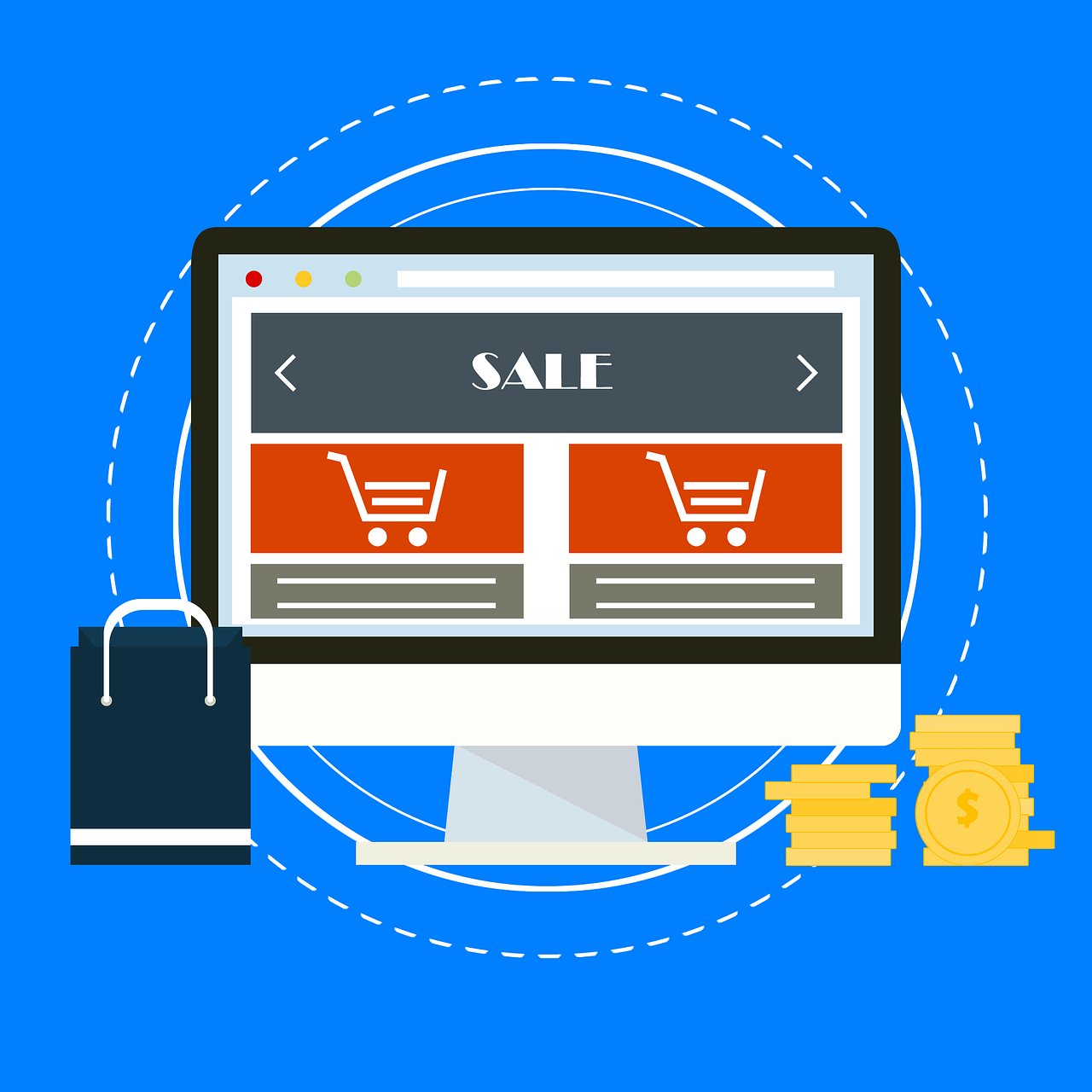
Key Steps
Decide if Dropshipping Is Right
You may ask if dropshipping is for you. This business lets you sell things online without keeping stock. You pay for items only after a customer orders. You do not risk buying lots of stock first. If you want to work from anywhere and spend little to start, dropshipping might suit you.
Tip: Dropshipping is best if you like learning new things and can handle change. You need to be patient and try out new ideas.
Understand the Business Model
To master Dropshipping, you must know how it works. You are the link between suppliers and customers. When someone buys from your shop, you send the order to your supplier. The supplier sends the product straight to the customer. You keep the money left after paying your supplier.
Here are the main steps experts say help with mastering dropshipping in 2025:
Pick a niche with care and check what others sell to find good chances.
Choose good suppliers who offer quality products and quick delivery.
Make a smart, mobile-friendly shop that is easy to find online.
Register your business and keep your money matters in order.
Build a strong brand so people trust and remember you.
Use online marketing like paid ads, working with influencers, content, and emails.
Look at your results and keep getting better by using analytics.
Keep up with new things like AI, shopping on phones, and loyalty programmes.
Note: Many top dropshippers use their profits to set up local warehouses. This helps them ship faster and makes customers happier.

2025 Trends
AI Tools and Automation
In 2025, mastering dropshipping means using AI and automation to save time and earn more. AI tools help you spot popular products by checking sales and social media. They also help you pick the best suppliers for fast shipping and good quality. Automation does jobs like updating products, keeping track of stock, and handling orders. You do less boring work and make fewer mistakes.
AI chatbots answer customer questions all day and night, so your shop is always ready.
Automated pricing tools change your prices quickly to keep you ahead.
Marketing AI makes ads and suggestions for each customer, so you reach the right people.
Inventory tools guess what you will need and order more stock for you.
Tip: Free AI tools like Oberlo and Spocket help you add products and manage orders. Paid tools such as AutoDS and Zik Analytics give you more features to grow your shop.
Minimal Investment
Dropshipping is still popular because you do not need much money to begin. You do not buy stock first and only pay suppliers after you sell. You can start your shop with little money and grow as you learn. AI and automation save even more money by doing jobs that used to need staff.
Here is a table to show how dropshipping and normal shops compare:
Feature | Dropshipping | Traditional Retail |
|---|---|---|
Inventory Needed | No | Yes |
Start-up Costs | Low | High |
Location Flexibility | High | Low |
Automation Options | Extensive | Limited |
Risk Level | Lower | Higher |
You can see why mastering dropshipping is popular in 2025. You get to work from anywhere, take less risk, and use automation.
Callout: The global dropshipping market is growing very fast. Experts think it will reach £464 billion in 2025. If you want to start a good online business, now is a great time.
Niche Selection
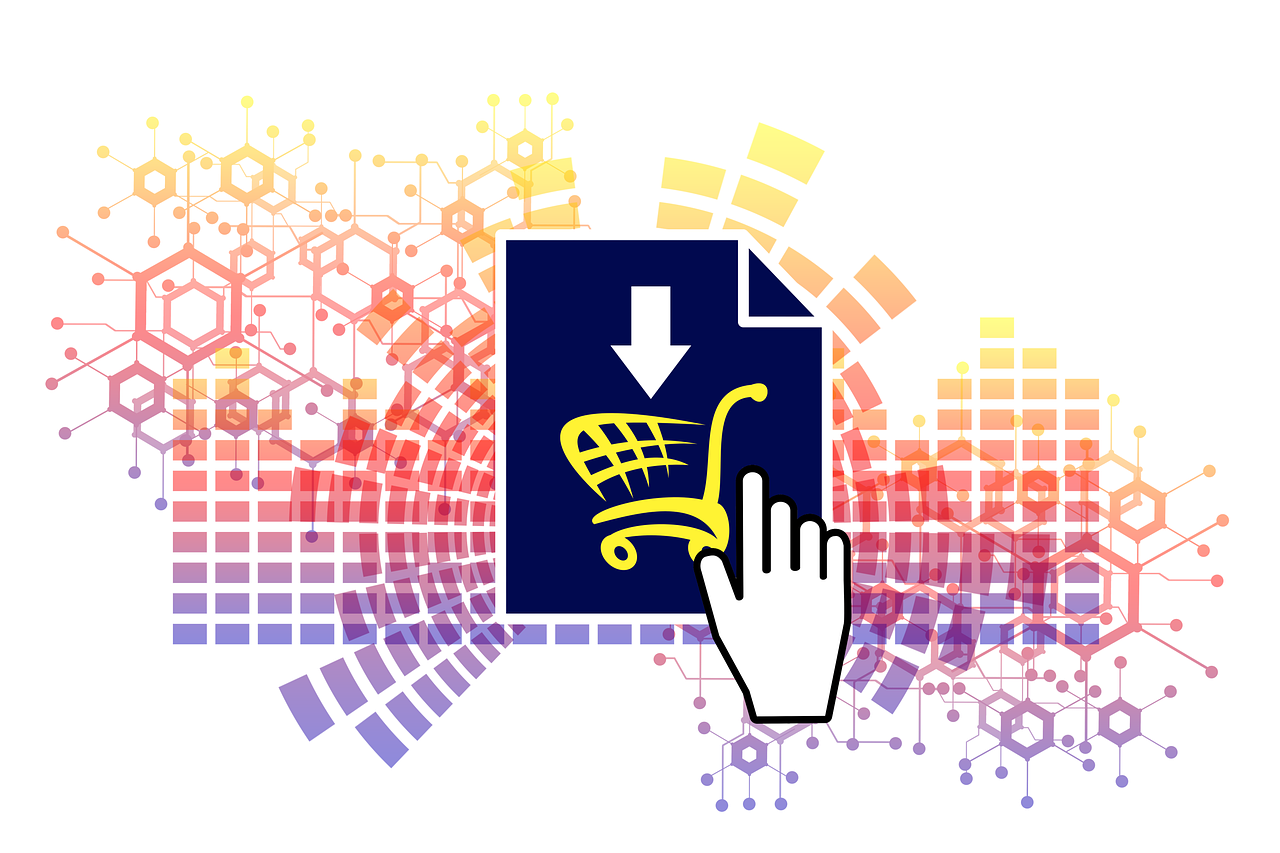
Choosing the right niche is the first big step in dropshipping. If you pick a niche with high demand and low competition, you set yourself up for success. You want to find a market that matches your interests and skills, but also has real buyers looking for products. Let’s break down how you can do this in 2025.
Market Analysis
Research Tools
You have many tools at your fingertips to help you spot a winning niche. These tools give you data on what’s selling, who is buying, and how much profit you can make. Here are some of the best ones for dropshipping:
Tool Name | Key Features | Pricing Example |
|---|---|---|
Sell The Trend | AI-powered product explorer, 1-click order fulfilment, website builder | Starts at $39.98/month |
AliExpress Dropshipping Centre | Product performance data, sales history, shipping info, free to use | Free |
Niche Scraper | Unlimited product scrapes, keyword research, store revenue insights | Free plan, Pro $49.95/month |
Dropship Spy | Top-selling products, ad insights, reliable suppliers | $39/month |
Thieve.co | Product popularity scores, supplier images, niche reports | $15/month |
Ecomhunt | Curated product database, performance tracking, competitor analysis | Free plan, Basic $23/month |
SalesSource | Shopify reports, browser extensions, 24/7 support | $49/month |
You can also use free tools like Google Trends and Facebook Ads Library to see what’s hot right now. Forums like Reddit and Quora help you spot trends and customer pain points. If you want to dig deeper, SEO tools such as Google Keyword Planner show you what people search for most.
Tip: Use automation tools like AutoDS to save time on research and focus on growing your shop.
Identifying Profitable Niches
To find a profitable niche, follow these steps:
Look at social media ads and engagement to see what’s trending.
Visit online marketplaces like Amazon or AliExpress to check sales volumes.
Make sure you can earn a good profit after all costs.
Choose a niche that matches your interests and knowledge.
Keep an eye on trends and update your products often.
You want a niche where people buy often, but not too many shops sell the same thing. If you stay updated and use the right tools, you can spot new trends before others do.
Competitor Research
Analysing Competition
You need to know who your competitors are and what they do well. Start by searching for products in your chosen niche. Look at their websites, social media, and reviews. Try to act like a customer—sign up for their emails and see how they market to you.
Check their website design and product range.
Read customer reviews on Trustpilot or social media.
Note their prices, shipping times, and special offers.
Keep your notes organised in a spreadsheet. This helps you spot gaps in the market.
Differentiation Strategies
Standing out is key. Ask yourself, “What can I do better?” Maybe you offer faster shipping, better customer service, or unique products. You could also build a strong brand or create helpful content for your audience.
Note: Always look for ways to improve on what your competitors offer. Small changes can make a big difference in dropshipping.
By choosing the right niche and understanding your competition, you give your store the best chance to succeed in 2025.
Supplier Selection

Picking the right suppliers is very important. Your dropshipping business depends on them. If you want customers to come back, you need fast delivery. You also need products that are good quality. Let’s see how you can find the best partners for your store in 2025.
Finding Reliable Suppliers
Fast Shipping
Customers want their orders quickly. Slow shipping can lead to bad reviews. You might lose sales if deliveries take too long. Always check where your supplier’s warehouses are. Local warehouses mean faster shipping. Short transit times help you avoid customs delays. This keeps your customers happy. Order a sample to test how fast they deliver. See if they offer tracking for your orders. Some suppliers use branded or plain packaging. This can help your brand look better.
Quality Products
You need products that look nice and work well. They should last a long time. Bad quality means returns and unhappy customers. Before you sell anything, order samples first. Check if the product is made well and is safe. Look for suppliers with good reviews and a strong history. You can find reviews on Trustpilot or social media. Forums are also helpful for checking suppliers. Good suppliers give clear product details. They keep their stock updated. This helps you avoid selling items that are out of stock.
Tip: Build good relationships with your suppliers. Talk often and give feedback. Pay them on time. This helps you get better service and fewer problems.
Supplier Platforms
There are many platforms to find good suppliers. Each platform has its own benefits. Pick the ones that match your niche and business goals.
Supplier Platform | Key Features & Advantages | Niche / Specialisation |
|---|---|---|
Shopify Collective | Works well with Shopify, orders are automated | Many types of products |
Spocket | US/EU suppliers, fast shipping, reliable quality | Focus on US/EU |
AliExpress | Big global network, lots of choices | General, worldwide |
DSers | Works with AliExpress, bulk ordering | General |
Modalyst | Fashion trends, automated fulfilment | Fashion and clothes |
CJDropshipping | Large catalogue, private label options | General |
Printful | Print-on-demand, custom merchandise | Print-on-demand |
Sunrise Wholesale | US-based, fast shipping, good prices | General, US market |
Vetting Suppliers
Not all suppliers are the same. You need to check a few things before you trust them.
Look at their reviews and business history.
Test their products by ordering samples.
Make sure they work with your store platform.
Check their minimum order rules and fees.
Confirm they offer good shipping and tracking.
If you want less risk, use more than one supplier. This helps if one supplier runs out of stock or raises prices.
Communication Tips
Good communication helps your business run well. Pick suppliers who reply quickly and clearly. Avoid those who are slow or hard to understand. Use email, chat, or video calls to talk. Be clear about what you need. Ask questions about products, shipping, and returns. If you keep talking, you solve problems faster. You also build trust.
Note: Many top dropshippers use Supplier Relationship Management (SRM) tools. These tools track supplier performance and automate orders. SRM saves you time and helps you spot problems early.
Store Setup

Setting up your dropshipping store is an exciting step. You want a shop that looks professional, runs smoothly, and follows the rules. Let’s walk through the main things you need to do.
E-commerce Platforms
Shopify and Alternatives
Shopify is a favourite for many dropshippers. It is easy to use and has lots of apps for dropshipping. You can connect your store to suppliers and automate orders. Shopify also gives you strong customer support and plenty of guides.
But you have other choices. WooCommerce works with WordPress and gives you more control. Wix and BigCommerce are also good for beginners. Each platform has its own features, so you should pick one that fits your needs.
Here’s a quick look at what matters most when choosing a platform:
Key Feature | Why It Matters |
|---|---|
Ease of Use | Saves you time and makes setup simple |
Integration Capabilities | Connects with suppliers and payment systems |
Customer Support | Helps you fix problems fast |
Dropshipping Plugins | Automates orders and stock updates |
Scalability | Lets your store grow without trouble |
Marketing & SEO Tools | Brings more visitors to your shop |
Transparent Pricing | Avoids surprise fees |
Tip: Look for platforms that support AI-powered store builders. These tools can help you design your shop and automate tasks with just a few clicks.
Store Builders
AI-powered store builders are changing the game in 2025. You can use tools like Shopify Magic or Wix ADI to create a shop in minutes. These builders suggest layouts, write product descriptions, and even help with SEO. You save time and get a shop that looks great on any device.
Branding
Brand Identity
Your brand is more than a logo. It is how people remember you. Start by picking a name, logo, and colours that match your style. Use tools like Hatchful to make a logo for free. Tell your story and share your values. This helps people trust you.
Share real photos and videos of your products.
Post behind-the-scenes clips on Instagram or TikTok.
Work with micro-influencers to reach new fans.
Use email marketing to keep customers coming back.
Offer custom packaging or private labels if your supplier allows.
Note: Consistency is key. Use the same colours, fonts, and voice everywhere. This makes your shop look professional and builds loyalty.
Store Design
A clean and simple design works best. Make sure your shop is easy to use on phones and computers. Use clear product photos and short, honest descriptions. Add customer reviews to build trust. Fast loading times keep shoppers happy.
Legal and Financial Setup
Business Structure
You need to register your business before you start selling. Pick a structure that fits you, like a sole trader or a limited company. This affects your taxes and how much risk you take on. Get an EIN if you plan to open a business bank account.
Register your business name.
Get any licences you need for your products.
Sign clear contracts with suppliers about quality and refunds.
Tax and Compliance
You must follow the law. Collect and pay sales tax if needed. If you sell overseas, check VAT and customs rules. Write clear return and refund policies. Use secure payment systems to protect your customers. Keep good records of all your sales and payments.
Callout: Always check that your suppliers have the right to sell the products. Protect your brand and your customers by following data privacy rules like GDPR.
Setting up your store the right way helps you avoid problems later. Take your time and get each step right. Your future self will thank you!
Product Listing

Creating strong product listings can make or break your dropshipping store. You want your products to stand out, attract buyers, and rank well in search results. Let’s look at how you can do this step by step.
Listing Optimisation
Titles and Descriptions
Your product title is the first thing shoppers see. Use clear, descriptive titles with important keywords. Keep them short but make sure they tell people exactly what you’re selling. For example, “Wireless Bluetooth Earbuds – Noise Cancelling, 20hr Battery”.
When you write descriptions, focus on what makes your product special. Highlight the benefits, not just the features. Tell customers how your product solves their problems. Use simple language and break up text with bullet points for easy reading.
Tip: Always check what words your competitors use. This helps you find the best keywords and spot what buyers care about.
Images and Videos
Pictures sell products. Use high-quality images that show your product from different angles. Make sure the lighting is good and the background is clean. If you can, add a short video showing the product in action. Videos help customers imagine using your product and build trust.
Show close-ups of important details.
Include lifestyle images to help buyers picture the product in real life.
Encourage happy customers to share their own photos and reviews. This adds social proof and boosts your credibility.
Pricing
Profit Margins
You want to make money, so set your prices carefully. Many dropshippers aim for a profit margin of 15-20%. If you can, push for 30-40% on some products. Start with cost-plus pricing: add up all your costs (product, shipping, fees) and then add your profit margin.
Competitive Pricing
Check what your competitors charge. If you price too high, shoppers may leave. Too low, and you lose profit. Try psychological pricing, like £19.99 instead of £20.00, to make prices look better. Use automation tools to adjust prices quickly if your supplier changes costs or if demand goes up.
Note: Test different pricing strategies. Sometimes, bundling products or offering premium options can boost your profits.
SEO
Keyword Research
Good SEO brings more visitors to your store. Start by finding keywords that shoppers use when searching for your products. Use these keywords in your titles, descriptions, and image alt text. Don’t stuff too many keywords—keep it natural and easy to read.
On-Page Optimisation
Make sure each product page has unique content. Avoid copying text from suppliers. Use clear headings and keep your descriptions under each product. Add schema markup so search engines can show your ratings and prices in search results. Check your site on mobile to make sure it loads fast and looks good.
Callout: Keep an eye on your SEO performance with tools like Google Analytics. Update your listings often to stay ahead of changes in search trends.
Marketing

Audience Building
Social Media
You want to reach people where they spend their time. Social media is perfect for this. Start by picking platforms your target audience uses most. Instagram, TikTok, and Facebook work well for many dropshipping niches. Share real photos, short videos, and behind-the-scenes clips. Ask questions in your posts to get people talking. Reply to comments and messages quickly. This helps you build trust and keeps your followers engaged.
Tip: Create a buyer persona. Think about your ideal customer’s age, interests, and habits. This helps you post content they care about and makes your marketing more effective.
Influencer Partnerships
Influencers can help you reach new customers fast. Look for influencers who share your values and have followers in your niche. You do not need to work with big names. Micro-influencers often have loyal fans and cost less. Send them your products and ask for honest reviews or unboxing videos. Their followers will see your brand and may visit your shop.
Partner with influencers who match your brand style.
Offer discount codes or giveaways to boost engagement.
Track which partnerships bring the most sales.
Note: Marketing expert Philip Kotler says you should define your target market clearly and offer something special. Influencer partnerships help you do just that.
Paid Ads
Facebook and Instagram
Paid ads help you reach people who might not find you otherwise. Facebook and Instagram let you target users by age, interests, and behaviour. Start with small budgets and test different ad images and messages. Create several ad sets to see which audience responds best. Check your results and spend more on the ads that work.
Google Shopping
Google Shopping puts your products in front of people who are ready to buy. When someone searches for a product, your listing can appear at the top. Use clear product titles and good images. Set a daily budget and watch your ad performance. Adjust your bids to get the best results.
Callout: Always test different audiences and ad styles. Use the data to refine your targeting and improve your return on investment.
Content and Email
Blogging
Blogging helps you attract visitors who are searching for answers. Write posts that solve problems or answer questions in your niche. Use keywords that your customers search for. Share tips, how-to guides, and product comparisons. Link your blog posts to your product pages. This boosts your SEO and brings more people to your shop.
Repurpose your blog content for social media and emails.
Share customer stories or reviews in your posts.
Email Automation
Email marketing is powerful for dropshipping. Set up automated emails for new subscribers, abandoned carts, and order updates. Welcome emails can share your brand story and offer a discount. Abandoned cart emails remind shoppers to finish their purchase. Segment your email list by customer interests and behaviour. This lets you send messages that feel personal.
Automated emails make up a small part of your total emails but can drive over a third of your sales. Keep your email list clean and test your messages to see what works best.
Order Management

Managing orders well helps your dropshipping business work smoothly. You want customers to feel happy from buying to getting their parcel. Let’s see how you can master fulfilment and customer service in 2025.
Fulfilment
Automation Tools
Automation makes things easier for you. Dropshipping tools send orders, update tracking, and handle returns. Warehouse Management Systems help you process orders fast and avoid mistakes. These systems track stock and guess what you’ll need, so you don’t run out or have too much.
Use real-time tracking to give customers updates.
Automate order confirmations and shipping alerts.
Connect your store to supplier platforms for instant order sending.
Tip: Third-party logistics companies can pack and ship for you. This gives you more time for marketing and customer care.
Returns and Tracking
Returns happen, but you can make them simple. Set up a clear return policy and show it on your website. Decide if you or your supplier will handle returns. Make sure customers get tracking numbers for every order. This builds trust and reduces questions.
Here’s a simple checklist for easy returns and tracking:
Step | What to Do |
|---|---|
Return Policy | Write clear rules and time limits |
Tracking Numbers | Send tracking info quickly |
Damaged Items | Ask for photos, offer refunds or replacements |
Updates | Keep customers informed at every step |
Customers like knowing where their parcel is. Real-time tracking and honest shipping times help them feel safe.
Customer Service
Handling Complaints
Complaints are normal in business. You can turn unhappy customers into loyal fans if you act fast and show you care. Listen to their problem, ask for details, and offer solutions like refunds or replacements. Never blame the supplier. Take responsibility and keep the customer updated.
Use live chat, email, and social media for quick replies.
Automate answers to common questions with chatbots.
Train yourself or your team to stay calm and helpful.
Always reply to issues quickly. Customers like honesty and fast action.
Building Loyalty
You want customers to come back again. Personalise your service by using their name and remembering past orders. Send thank-you emails or offer discounts for repeat purchases. Loyalty programmes and follow-up messages help build strong relationships.
Share product guides and how-to videos.
Ask for feedback and use it to improve.
Offer extra support, not just sales.
Building loyalty means doing more than just selling. Happy customers tell their friends and help your business grow.
Scaling
Scaling your dropshipping store means making your business bigger and easier to run. You want to watch your progress, try new markets, and get help with daily jobs. Here’s how you can do this in 2025.
Performance Metrics
KPIs
You need to check if your store is doing well. Key Performance Indicators (KPIs) help you see how you are doing. Here are some important KPIs to keep an eye on:
Total Sales and Revenue: Shows how much money you earn.
Average Order Value (AOV): Tells you what customers spend each time.
Conversion Rate: Measures how many visitors buy something.
Customer Acquisition Cost (CAC): Shows what you pay for each new customer.
Customer Lifetime Value (CLV): Tells you what a customer spends over time.
Gross Profit Margin: Shows how much profit you keep after costs.
Return Rate: Measures how often customers send things back.
Fulfilment and Shipping Times: Tracks how fast orders reach customers.
Customer Satisfaction and Reviews: Tells you what buyers think about your shop.
Tip: Check these KPIs every week. You will spot problems early and make better choices.
Analytics Tools
You can use smart tools to track your KPIs. These tools save you time and give you easy reports.
AutoDS: Automates product research, price changes, and order fulfilment.
BeProfit: Helps you see your profits and ad spending.
Zik Analytics: Good for eBay dropshipping, shows competitor prices and trends.
Helium 10 and Jungle Scout: Useful for Amazon sellers, track sales and market changes.
Hootsuite: Manages your social media and tracks engagement.
Unbounce: Builds landing pages and tracks conversions.
You can link these tools to your store and get updates quickly.
Expansion
New Niches
You might want to sell new products or reach different groups. Here’s how you can grow into new niches:
Learn about your audience. Check their age, interests, and problems.
Build a strong brand that fits the new niche.
Use social media to reach your target group.
Write blog posts and guides with niche keywords.
Send emails to keep customers interested.
Run ads on Google and social media for your new products.
Work with influencers who match your niche.
Ask for reviews and offer loyalty rewards.
Track your results and change your plan if needed.
Try one niche at a time. You will see what works best for your store.
International Markets
Selling to other countries can help you grow quickly. You need to plan well. Here’s a table to show what matters most:
Key Point | What You Should Do |
|---|---|
Keep your brand look and message the same everywhere. | |
Value Proposition | Offer fast shipping and good support. |
Trust Building | Use clear policies and support different languages. |
Logistics & Fulfilment | Work with warehouses near your customers. |
Shipping & Customs | Explain fees and delivery times clearly. |
Marketing Localisation | Change your ads and website for each country. |
Payment & Currency | Show prices in local money and use safe payment methods. |
Compliance | Follow local laws and tax rules. |
Pick products that fit each country’s needs. | |
Supplier Relationships | Choose suppliers who can ship worldwide. |
Technology & Tools | Use software for currency, shipping, and support. |
Challenges & Solutions | Plan for language, customs, and shipping delays. |
Start with one country first. Test your products and shipping before you grow more.
Outsourcing
Virtual Assistants
You can hire virtual assistants to help with daily jobs. They can answer emails, manage social media, and process orders. Outsourcing saves you money and gives you more time to grow your business. You get skilled workers from all over the world.
Virtual assistants can handle customer service, data entry, and marketing.
You can find assistants on websites like Upwork or Fiverr.
Set clear jobs and check their work often.
Task Automation
Automation tools can do many jobs for you. You can automate order fulfilment, stock updates, and email marketing. This makes your store run faster and with fewer mistakes.
Use AutoDS for product updates and order tracking.
Set up email automation for abandoned carts and promotions.
Schedule social media posts with Hootsuite.
Outsourcing and automation help you scale your business without working all day. You can focus on planning and growth.
Practical Tips

Success Tips
You want your dropshipping store to do well and grow. Here are some simple tips that many successful business owners use:
Pick a Profitable Niche
Choose a niche that lots of people want but not many shops sell. This helps you get loyal customers and find good suppliers.Do Thorough Product Research
Use tools like Google Trends and Amazon Bestsellers. Look for products that are popular and not sold by many shops.Market Your Store Effectively
Run ads on Facebook, Instagram, and TikTok. Use SEO and email marketing to get more visitors and keep them coming back.Build a Professional Website
Make sure your site loads fast and works on phones. Make checkout easy so people can buy quickly.Offer Excellent Customer Service
Give customers different ways to contact you. Reply fast to questions and fix problems quickly.Work with Reliable Suppliers
Build good relationships with suppliers who send quality products on time. Always have backup suppliers to avoid delays.Use Data to Make Decisions
Track your sales, customer actions, and marketing results. Use this information to make your store better and grow bigger.Set Clear Expectations for Shipping
Tell customers how long delivery will take. Work with suppliers who have local warehouses to ship faster.
Tip: Keep learning and try new ideas often. Make your marketing and product choices fit your customers. Always improve your store to stay ahead.
Common Mistakes
Many dropshipping business owners make the same mistakes. You can avoid these if you plan well and pay attention:
Entering Oversaturated Niches
Too much competition makes it hard to win. Research your niche before you start selling.Skipping Market Research
If you don’t study the market, you might pick bad products. Always check what customers want.Choosing Unreliable Suppliers
Bad suppliers cause slow delivery and poor quality. Test suppliers by ordering samples and reading reviews.Ignoring Customer Service
Slow or poor service makes customers unhappy. Set up a strong customer service plan.Incorrect Pricing
Prices that are too high or too low hurt your profits. Check what others charge and set your prices carefully.Neglecting Marketing
Even great products need promotion. Spend money on ads and build your audience.Copying Others’ Branding
If your shop looks like everyone else’s, people won’t remember you. Make your brand stand out.Poor Website Design
A messy site makes customers leave. Make your website simple and nice to use.Not Tracking Data
If you don’t track your results, you can’t get better. Use analytics tools and listen to what customers say.
Note: Dropshipping does not make you rich quickly. Set goals you can reach, be patient, and keep making your store better. Personalisation and always improving are important for long-term success.
FAQs
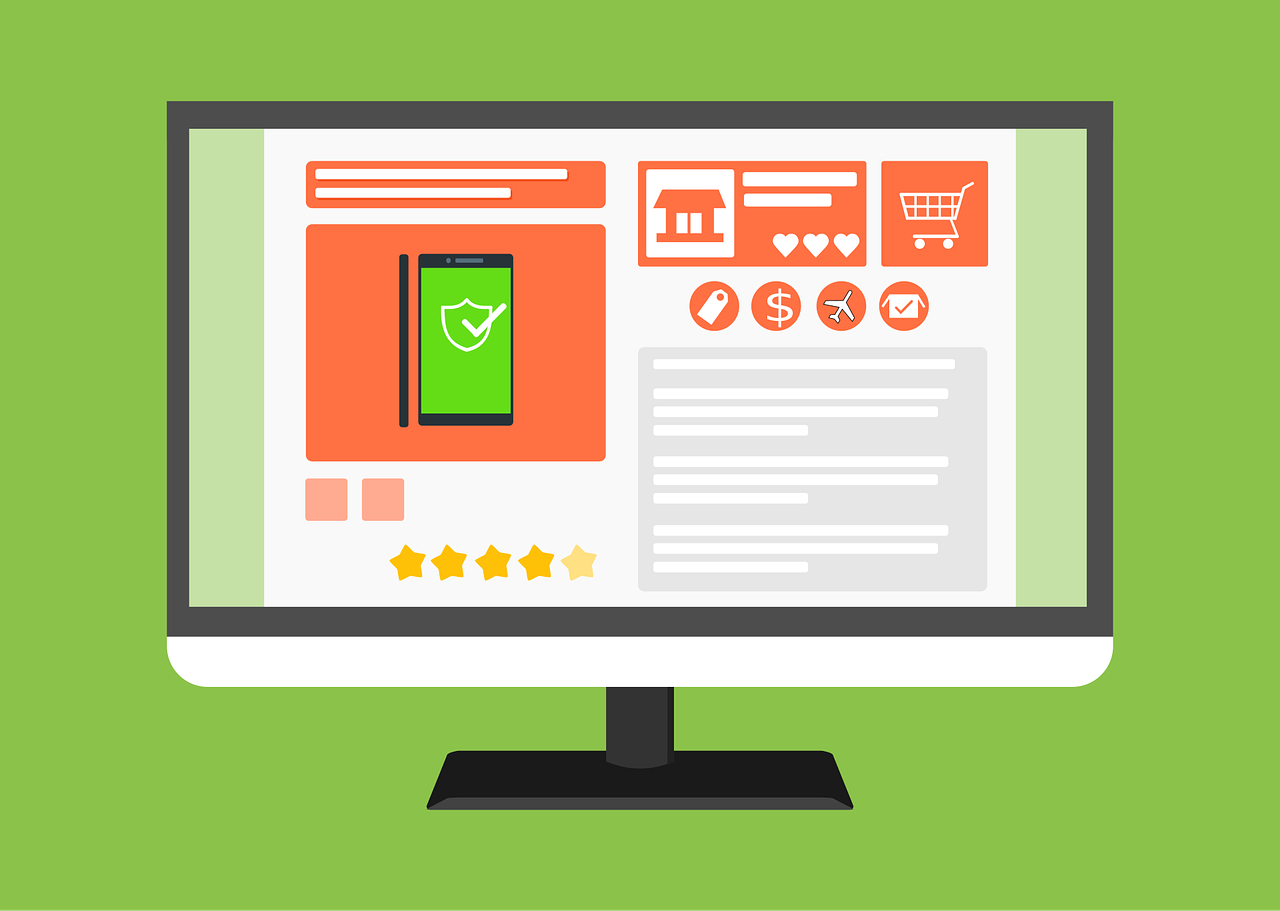
Dropshipping in 2025
You probably have lots of questions about dropshipping in 2025. Many people want to know if it is still a good way to start an online business. Let’s answer some of the most common questions you might have:
Do I need to buy stock before selling?
No, you do not need to hold any inventory. You only order products from your supplier after a customer buys from your shop. This makes dropshipping a low-risk business model.Are there minimum order requirements?
Most suppliers do not ask for minimum orders. This is one of the biggest benefits of dropshipping. However, you should always check each supplier’s policy before you start working with them.Why do dropshipping businesses fail?
Many shops fail because owners do not care about customer service. Some pick a niche they do not like or give up too soon. You need to put in time and effort before you see results.Can anyone start dropshipping?
Yes, almost anyone can start. Some suppliers only sell to businesses, so you might need to verify your shop. Always check if your supplier sells to the public or only to registered businesses.Where can I find more help?
You can find free guides and resources online. Many experts share tips to help you avoid mistakes and succeed. You do not need to pay for expensive courses to learn the basics.
Tip: Always read supplier reviews and test their service before you trust them with your orders.
Mastering Dropshipping: Advice
You want to get better at dropshipping and make your store profitable. Here are answers to the questions you might ask when you want to master this business:
What is dropshipping?
You sell products online without keeping them in stock. When someone buys from you, you order from a supplier who ships the item straight to your customer.Is the market too crowded?
Some niches have lots of shops, but you can still find success. Do your research and pick a niche with real demand and less competition.How do I choose the right supplier?
Look for suppliers with fast shipping, good reviews, and clear business policies. Test their products before you add them to your shop.Do I need to set up a company?
You do not always need to form a company, but it helps with taxes and supplier trust. Check the legal rules in your country.Can I sell on big platforms like Amazon or Walmart?
Yes, you can, but each platform has its own rules. Make sure you follow their policies and check if dropshipping is allowed.
If you want to keep learning, look for guides that explain each step. You will find answers to ethical questions, platform rules, and even age requirements for starting your shop.
Remember, mastering dropshipping takes time. Stay patient, keep improving, and use free resources to help you grow.
You now know the key steps for launching a profitable store in 2025. Mastering Dropshipping means you research your niche, plan your store, and keep improving every day. Stay curious and learn from your mistakes. Trends change fast, so adapt and try new ideas. Ready to take action? Start your journey today and build a business you can be proud of.
FAQ
What is dropshipping and how does it work?
You sell things online, but you do not keep stock. When someone buys from your shop, you buy the item from a supplier. The supplier sends the product straight to your customer.
Do you need a lot of money to start dropshipping?
No, you can begin with a small amount of money. You only pay for products after you make a sale. You do not have to buy stock before you sell.
How do you find reliable suppliers?
Look at supplier reviews and order some samples. Use trusted sites like Spocket or AliExpress. Good suppliers send orders fast and give quality products.
Tip: Always try out suppliers before you add their products to your shop.
Can you run a dropshipping store from anywhere?
Yes, you can run your shop from any place with internet. You do not need a real shop or a warehouse.
What are the biggest mistakes new dropshippers make?
Many people do not research the market, pick bad suppliers, or forget about customer service. You should always learn about your niche and test products first.
How do you handle returns and refunds?
Write a simple return policy. Choose if you or your supplier will deal with returns. Talk to customers quickly and give refunds or replacements if needed.
Customers trust shops that have easy and honest return rules.
Is dropshipping still profitable in 2025?
Yes, dropshipping can still make money. You must pick the right niche, use automation tools, and care about your customers. Trends change, so keep learning and try new things.

TangBuy: A Smarter Way to Dropship in 2025
If you're looking to stay competitive with dropshipping in 2025, speed and trend-awareness are key. TangBuy helps you stay ahead with real-time product trends, fast fulfilment, and factory-direct sourcing. With over 1 million ready-to-ship items, 24-hour order processing, and seamless Shopify integration, TangBuy makes it easier to test, scale, and succeed in today's fast-moving eCommerce landscape.
See Also
How To Start Your Dropshipping Venture Successfully In 2025
Essential Beginner Tips For Shopify Use Without Dropshipping 2025
Best Strategies For Achieving eBay Dropshipping Success In 2025
